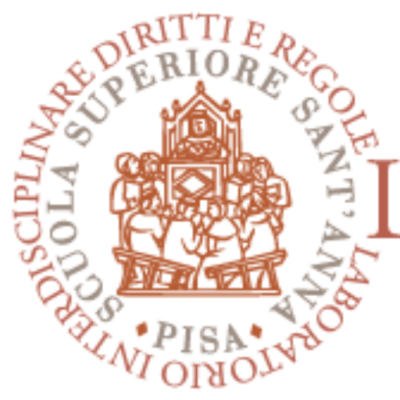POLICY BRIEF
04 July 2023
06

Chiara D’Elia – Stefano Tramacere
REGULATION (EU) 2017/745 OF THE EUROPEAN PARLIAMENT AND OF THE COUNCIL of 5 April 2017on medical devices, amending Directive 2001/83/EC, Regulation (EC) No 178/2002 and Regulation (EC) No 1223/2009 and repealing Council Directives 90/385/EEC and 93/42/EEC
MEDICAL DEVICES REGULATION (MDR) I
BACKGROUND
The European Medical Device Regulation (Regulation (EU) 2017/745) replaced the MDD[1] and AIMDD[2] directives aims to build a robust, transparent, and predictable system for placing medical devices on the market and putting them into service to protect the health of patients and users and promote innovation in the sector within the European Union (EU). At the same time, it sets high quality and safety standards for medical devices to meet the common safety requirements associated with such products.
The regulation harmonizes the rules for placing medical devices and their accessories on the market in the EU, enabling them to benefit from the principle of free movement of goods, and sets high quality and safety parameters for medical devices, ensuring, among other things, the reliability and robustness of data from clinical investigations and the protection of the safety of participants in such investigations.
To improve health and safety, it is necessary to significantly strengthen some key elements of the current regulatory approach, such as the supervision of notified bodies, conformity assessment procedures, clinical investigations and clinical evaluation, and market surveillance and supervision.
Where possible, international guidelines for medical devices developed, especially by the Global Harmonization Task Force (GHTF) and the International Medical Devices Regulators Forum (IMDRF), should be considered. This will help promote worldwide convergence of regulations to ensure a high level of safety protection globally and facilitate trade, particularly regarding unique device identification provisions, general safety and performance requirements, technical documentation, classification rules, conformity assessment procedures, and clinical investigations.
[1] Medical Device Directive 93/42/EEC (MDD).
[2] Directive 90/385/EEC on active implantable medical devices.
HIGHLIGHTS
- Definition of “medical devices”: a heterogeneous category of products with therapeutic or diagnostic activity, varying complexity, and different risk profile;
- More stringent requirements for manufacturers: the shift of many devices to higher risk classes has led to increased efforts by manufacturers to adapt their products and processes to the new required standards;
- Establishment of a European medical device database (Eudamed);
- Detailed definition and obligations of all economic operators;
- New figure of the “compliance officer”;
- Oversight of notified bodies:
- Clinical evaluation, Post-Market Surveillance and Post-Market Clinical Follow-up plan (PMCF);
- EU Declaration of Conformity;
Transparency and traceability of medical devices (UDI system).
POTENTIALLY RELEVANT SCENARIOS
- Definition of “medical device”: any instrument, apparatus, appliance, software, implant, reagent, material or other item intended by the manufacturer to be used, alone or in combination, for human beings.
- Diagnosis, prevention, monitoring, prediction, prognosis, treatment or alleviation of disease;
- Diagnosis, monitoring, treatment, alleviation of, or compensation for, an injury or disability;
- Investigation, replacement or modification of the anatomy or of a physiological or pathological process or state;
- Providing information by means of in vitro examination of specimens derived from the human body, including organ, blood and tissue donations, and which does not achieve its principal intended action by pharmacological, immunological or metabolic means, in or on the human body, but which may be assisted in its function by such means.
- Particular categories of medical devices:
- Devices for the control or support of conception;
- Products specifically intended for the cleaning, disinfection or sterilisation of devices;
- Software shall also be deemed to be an active device, g., an AI algorithm.
- Emphasis on device safety: this is the main objective and, also, a kind of appeal to all those involved in the production process. From design to post-market surveillance (see Recital 2 MDR)[3].
- New rules for classification of medical devices into 4 risk classes: I, IIa, IIb, and III (see Art. 51 and Annex VIII MDR).
Improved coordination mechanisms between EU countries on vigilance and market surveillance.
[3] For example, the requirement for manufacturers to have (at least) one person within their organization responsible for compliance, with appropriate expertise in the field (Art. 15 MDR).
RELEVANT INTERPRETATIONS
Guidance on significant changes regarding the transitional provision under Article 120 of the MDR regarding devices covered by certificates according to MDD or AIMDD. This document has been endorsed by the Medical Device Coordination Group (MDCG) established by Article 103 of Regulation (EU) 2017/745. The MDCG is composed of representatives of all Member States, and it is chaired by a representative of the European Commission[4].
[4] https://health.ec.europa.eu/system/files/2020-09/md_mdcg_guidance_significant_changes_annexes_en_0.pdf.
CROSS-REFERENCE WITH OTHER POLICY/LAW INITIATIVES
The MDR considers the GDPR. However, the process of health data collection via medical devices highlights the high legal risk of a lack of harmonization between MDR and GDPR. In fact, the MDR provides that when medical devices process personal data, they are under the scope of data protection rules, thus the GDPR must also applied. For instance, Art. 61 para. 1 requires that the clinical evaluation be prepared based on clinical data. Clinical data under Art. 2 para. 48 is not the same as “personal data” for the GDPR, but inevitably the notion of clinical data can include many cases of processing of personal health-related data.


